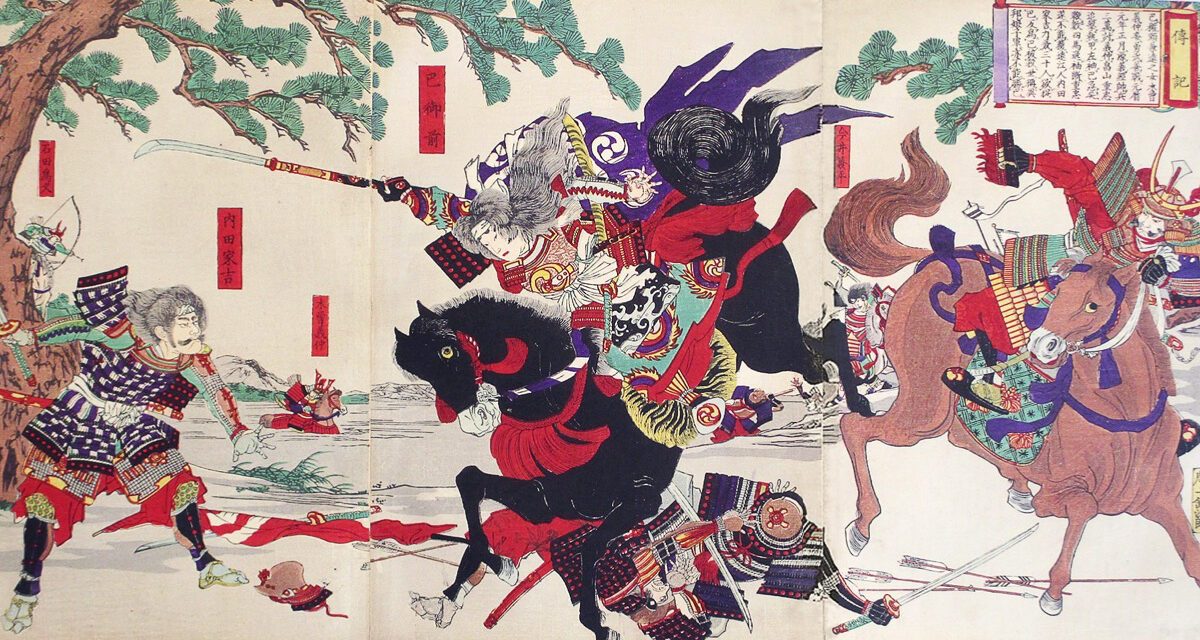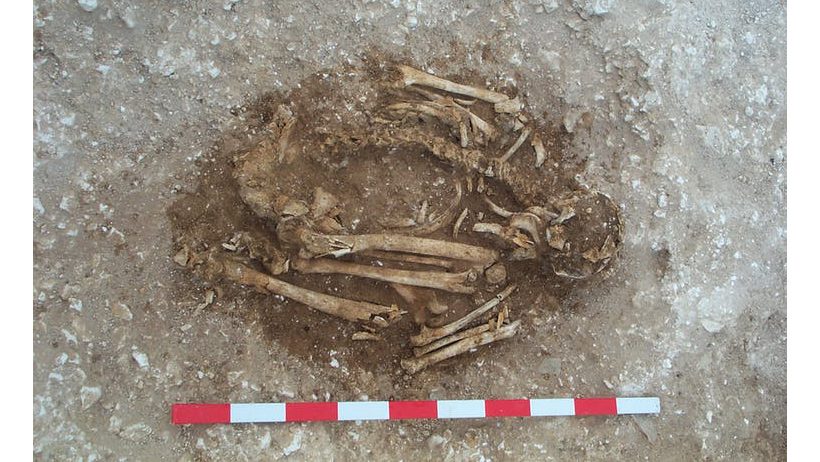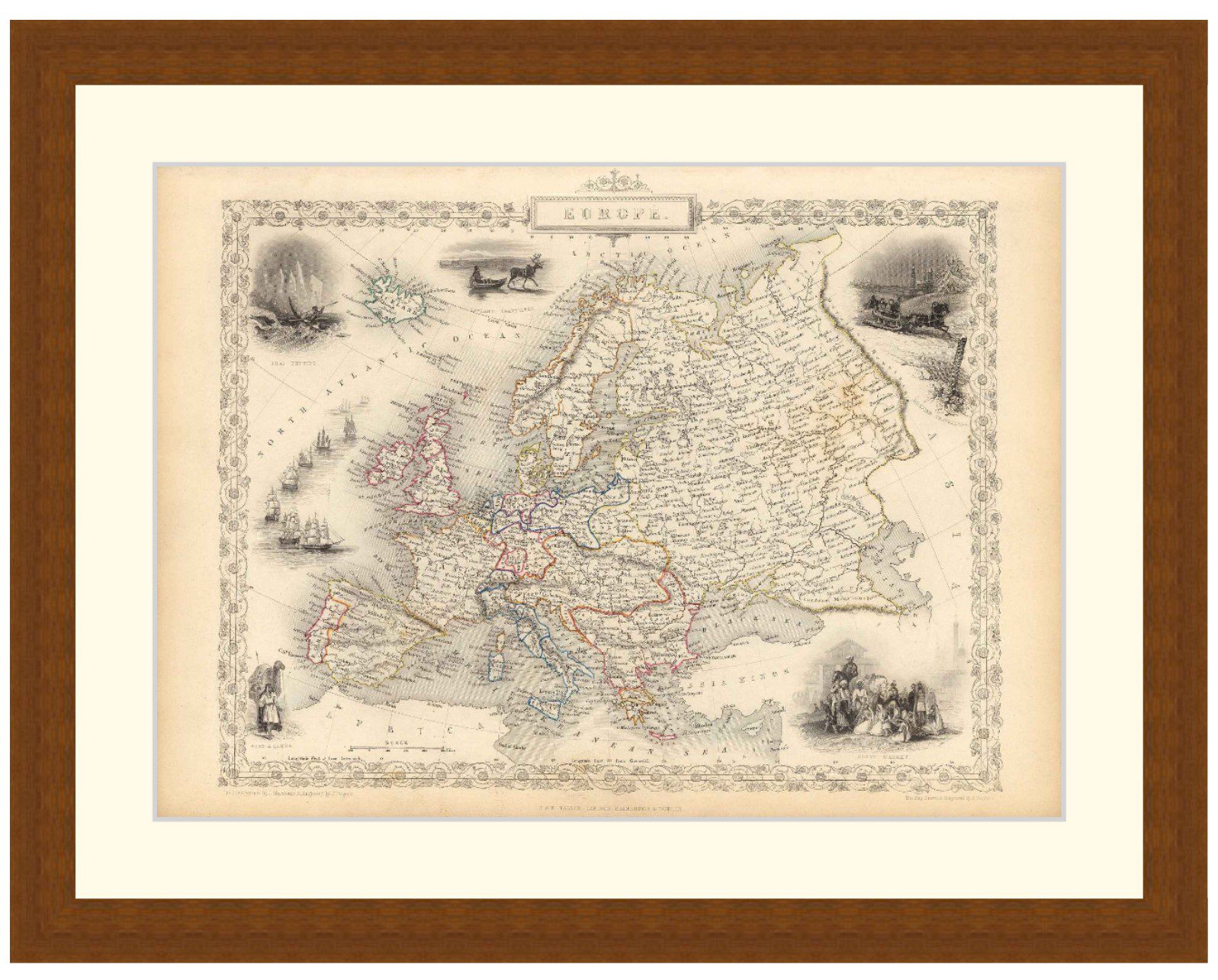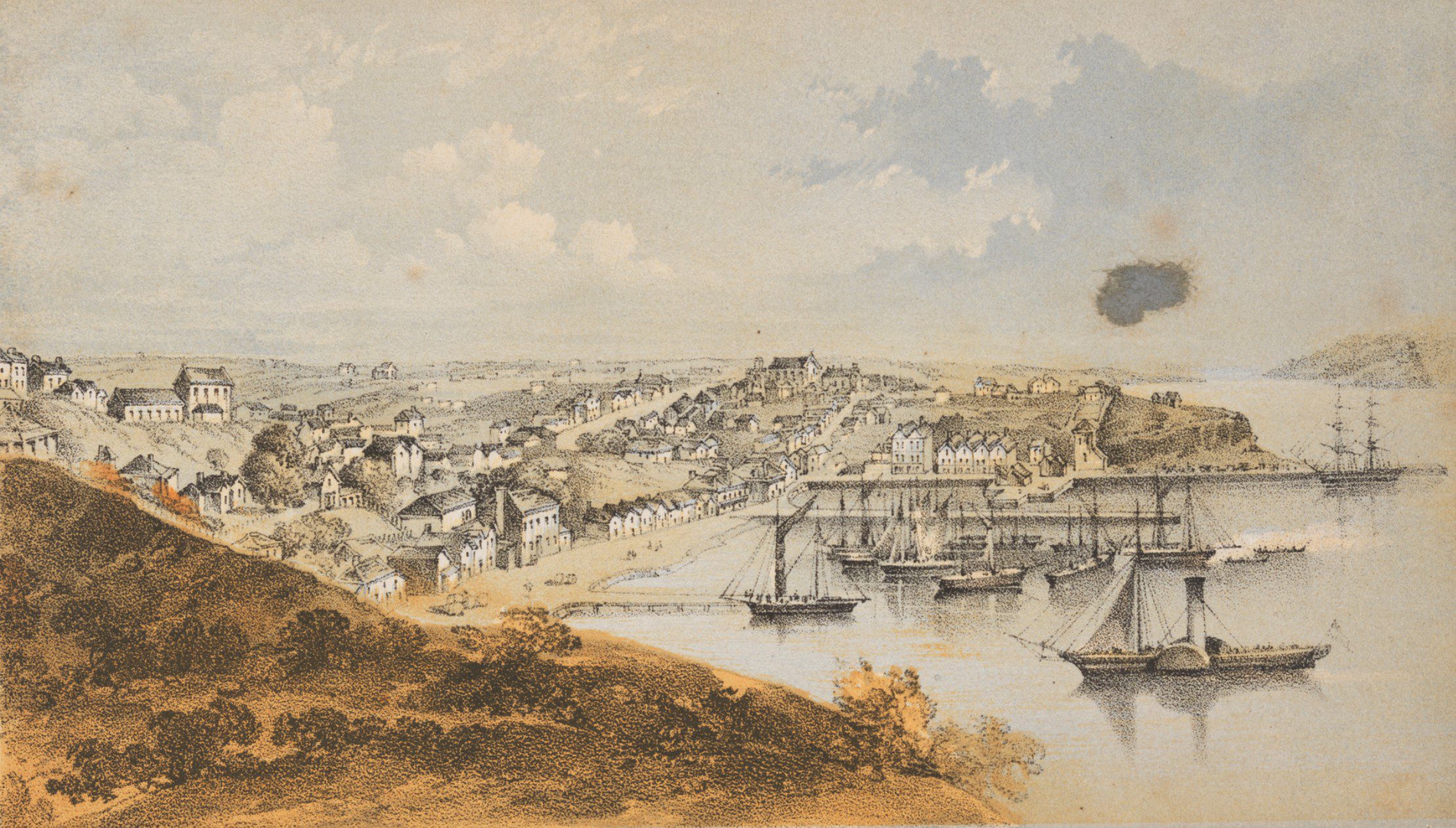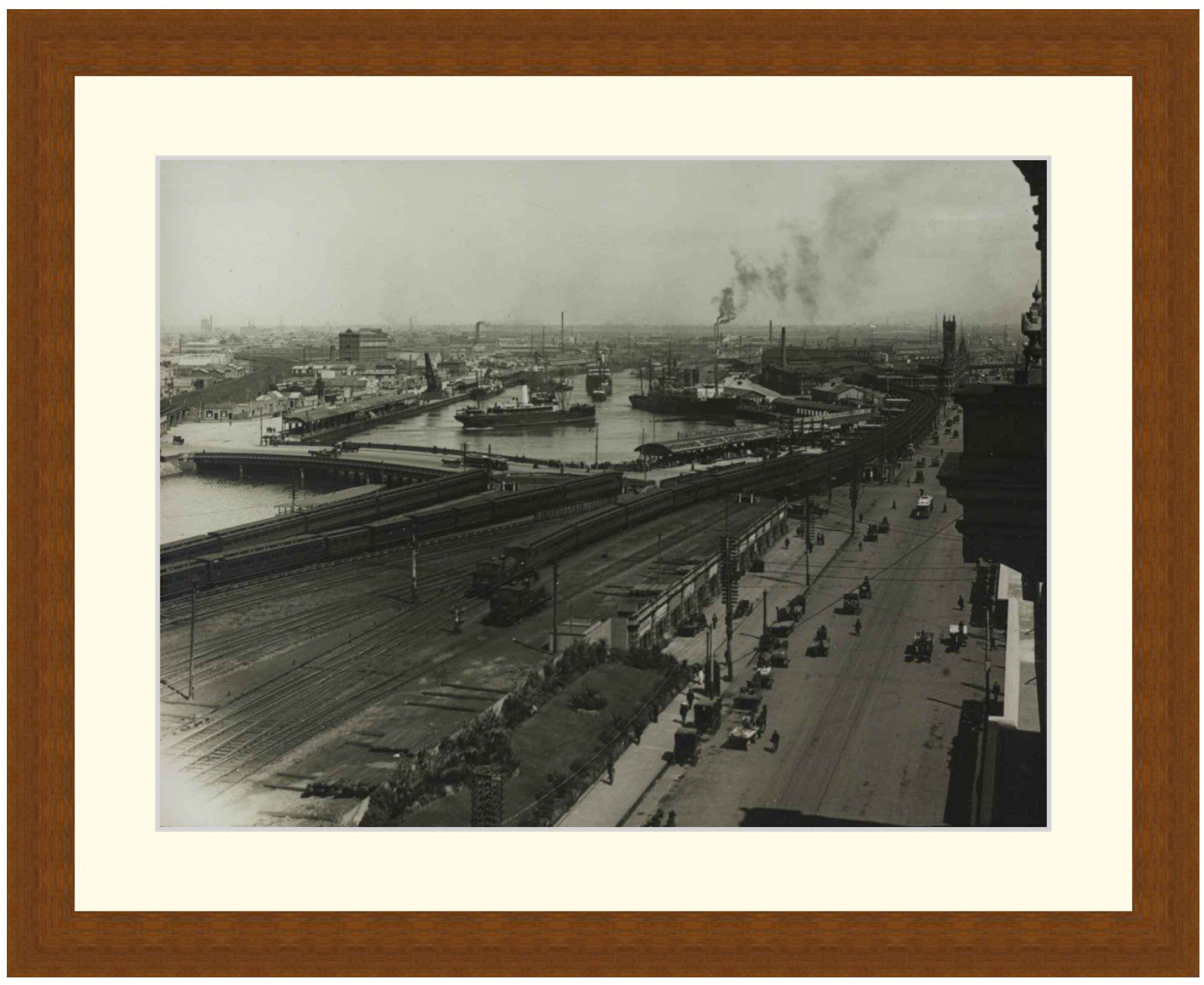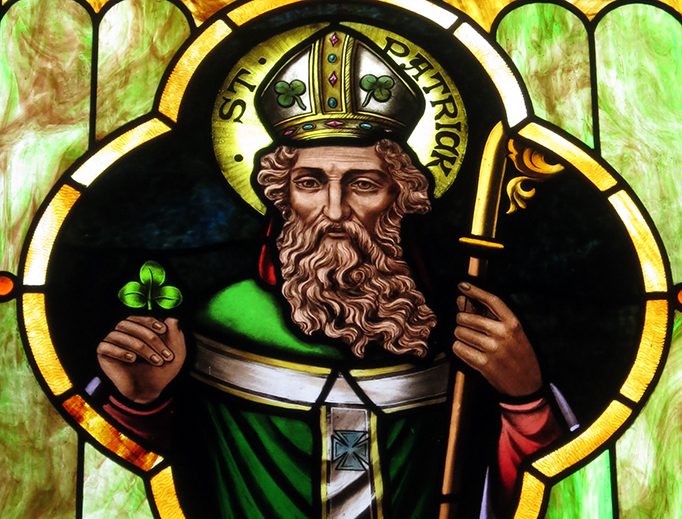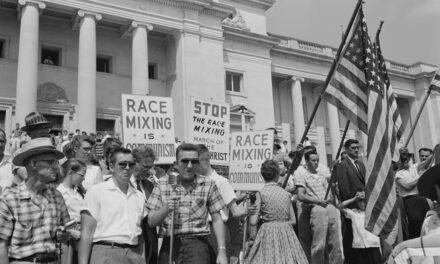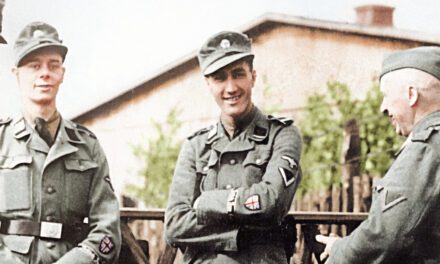Reading time: 6 minutes
In pre-modern Japan, there existed a group of samurai warriors that defy the modern worldview of Japanese culture. The Onna-musha, or Onna-bugeisha, were an impressive group of female warriors that were just as powerful and deadly as their male counterparts. Despite this, the Onna-musha and their incredible stories are not well known today.
By Jade McGee
The First Warrior Women
The word “Onna-bugeisha” literally translates to “woman warrior.” These women were as skilled in combat as their male counterparts. This warrior class came into existence around the time of Empress Jingu, a legendary Japanese empress who ruled as a regent following her husband’s death in 200 CE.
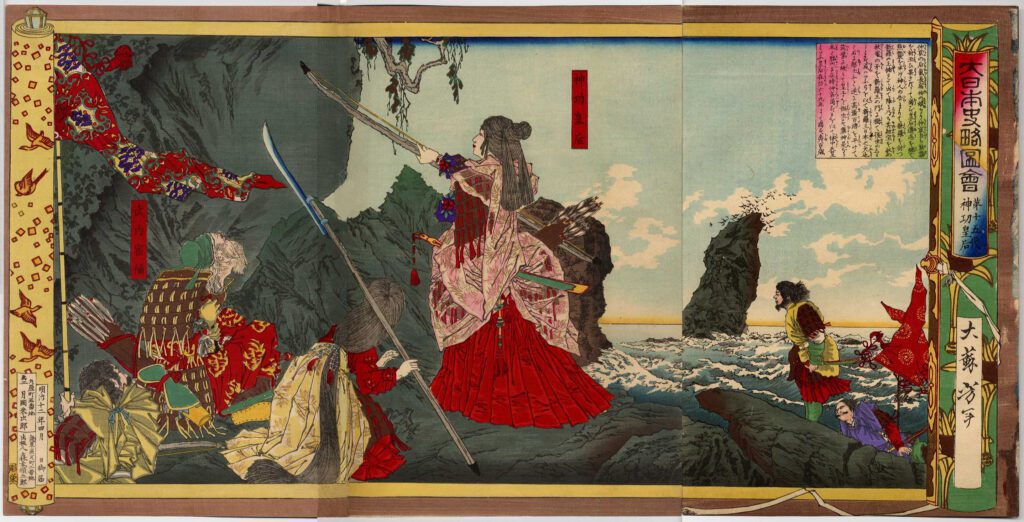
With Empress Jingu paving the way Onna-bugeisha became more numerous and prominent. They became famous for their iconic weapon, the Naginata. This balanced pole arm was used by both men and women, it had a longer reach than a sword, allowing the user to create space on the battlefield and strike their opponent while remaining out of their reach.
One of the most prominent early Onna-bugeisha is Tomoe Gozen, who helped the Minamoto rise to prominence during the Genpei War (1180-1185). The 5-year long war involved two prominent Japanese clans, the Taira and Minamoto. Gozen belonged to the latter, serving Minamoto no Yoshinaka, better known as Lord Kiso. Gozen’s talent on the battlefield saw her given command of 300 samurai. She was described by a contemporary chronicler below.
Tomoe was especially beautiful, with white skin, long hair, and charming features. She was also a remarkably strong archer, and as a swordswoman she was a warrior worth a thousand, ready to confront a demon or a god, mounted or on foot. She handled unbroken horses with superb skill; she rode unscathed down perilous descents. Whenever a battle was imminent, Yoshinaka sent her out as his first captain, equipped with strong armour, an oversized sword, and a mighty bow; and she performed more deeds of valour than any of his other warriors.
The Tale of Heike, chronical of the Genpei War.
During the battle of Awazu, Gozen defeated the enemy clan’s greatest warrior, Honda no Moroshige, decapitating him and presenting the head to her master, Yoshinaka.
While not much is known about Gozen’s life following the war, it’s generally accepted that she further paved the way for the Onna-bugeisha class.
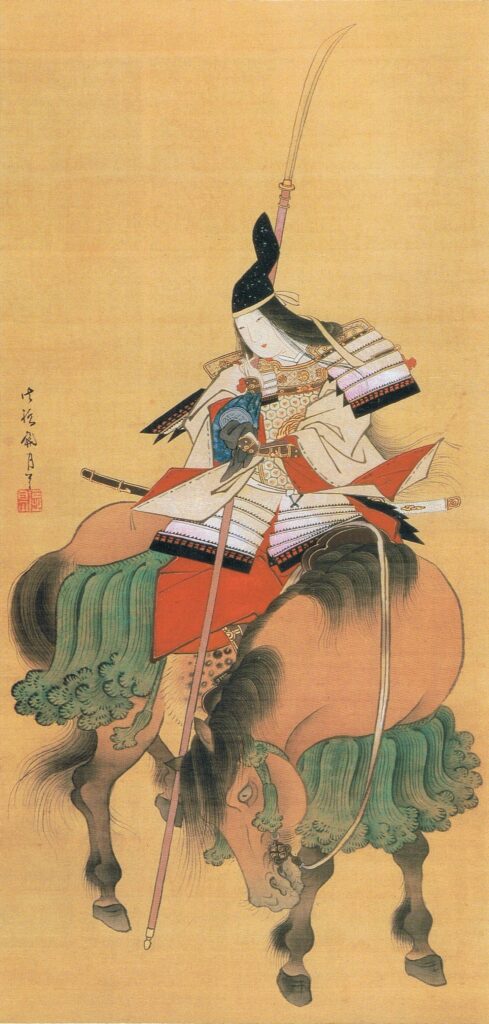
The Female Warrior Golden Age
For some time after Tomoe Gozen’s display of strength and fearlessness on the battlefield, the Onna-bugeisha. Evidence from Chancellor Tōin Kinkata’s (1291-1360) journal tells us that there were several “female cavalries” across the Japanese Empire. He notes that most were from western Japan, indicating that women from these areas, away from larger capital cities, were more likely to join the Onna-bugeisha.
However, it wasn’t until after the Ōnin War that female warriors entered their golden age. When several Daimyō (Japanese Lords) began fighting amongst themselves in territory disputes, women served among their armies. These women were both from noble clans and peasant families.
These Onna-musha were tasked with protecting villages and castles, along with training younger women in the art of war and the use of the naginata. This era produced some of the most notable female warriors in Japanese history – from Myōrin, who was particularly skilled in counter attacking from castles to repel besieging armies, to Akai Teruko, who became known as ‘The Strongest Woman in the Warring States Period.’
Some evidence indicates that female ninjas also existed. While their training differed from the male ninja, its core was still based on taijutsu, kenjutsu, and ninjutsu skills. A prime example of the existence of female ninjas is the recruitment of women to create a secret network of spies by warlord Takeda Shingen.
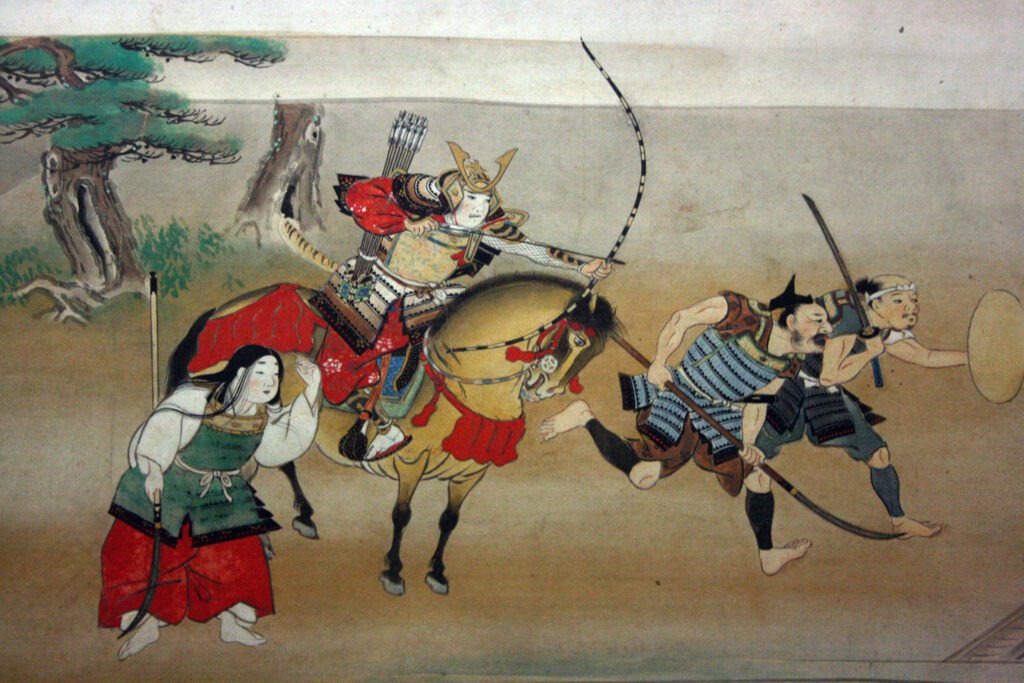
The Edo Period and The Beginning of The End
During the Edo Period and with the rise of Edo neo-Confucianism, the status of the Onna-musha began to diminish. This was despite their significant numbers and proven strength and success on the battlefield. Samurai, both male and female, saw their role change. Rather than being solely warriors, they become bureaucrats. Neo-Confucianism also dealt a blow to the Onna-musha, as it shifted societal views and forced women into more subservient roles.
Despite the major societal and political shifts some women continued to learn naginata handling techniques and Kenjutsu. Female-led Kenjutsu schools survived, with women still teaching swordsmanship.
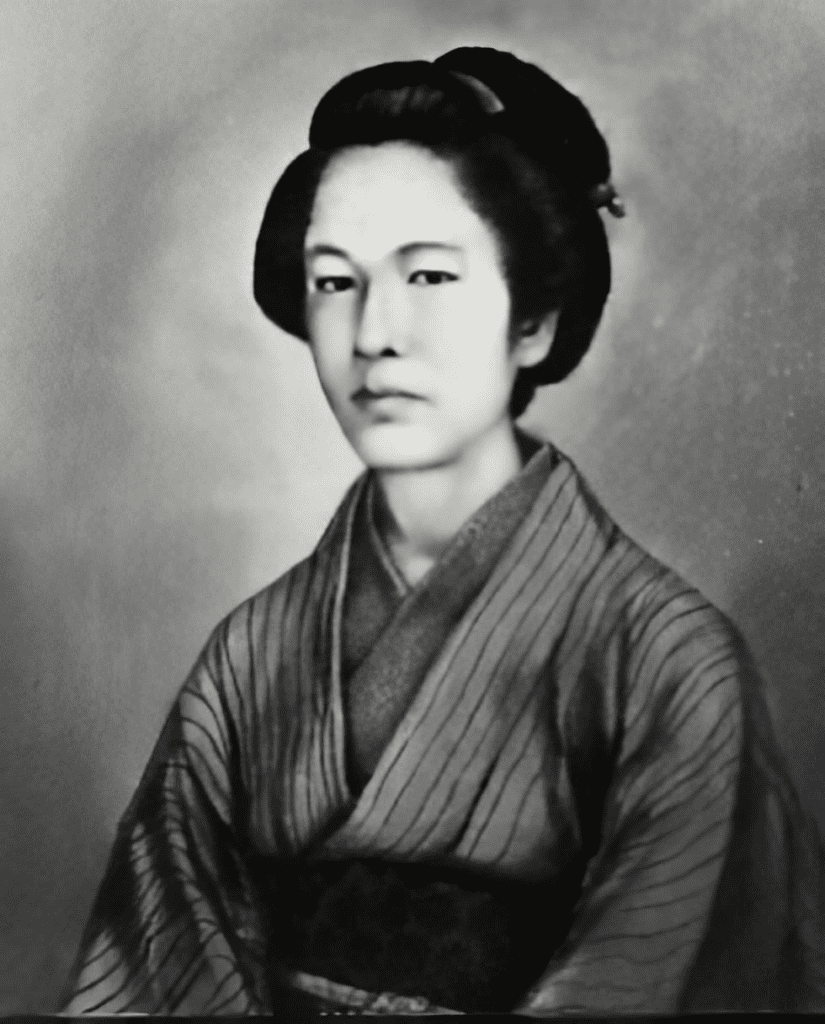
However, when war broke out again, a small group of Onna-musha proved their worth once more. In 1868, during the Battle of Aizu in the Boshin War, a female corps, named Jōshitai, or ‘Girls’ Army,’ was created. Led by Nakano Takeko, this group fought against 20 000 Imperial Japanese Army soldiers.
Takeko and her unit of 20 women were highly skilled in the naginata and joined about 3000 other samurai on the battlefield. Takeko was also highly educated and trained in martial arts. Under her command, her force fought bravely alongside their male counterparts.
Unfortunately, Takeko was mortally wounded in battle. Considered one of the last great female samurai, a monument was built in Tekeko’s honour in the Fukushima province.
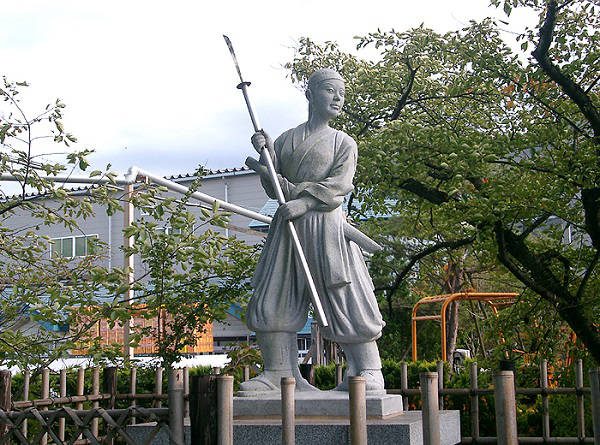
The End of The Onna-Bugeisha
The Battle of Aizu is often considered the last stand of the Onna-bugeisha. However, with the end of the Edo Period, came the Satsuma Rebellion, sending the country into even more turmoil. The Onna-Bugeisha proved themselves once more during the minor battles within the rebellion. These were the last recorded battles in which the Onna-Bugeisha fought.
The end of the rebellion signalled the end of the Samurai class, and subsequently the Onna-Bugeisha. Instead, it ushered in the modern concept of warfare fought by conscripted soldiers rather than military nobles.
The Satsuma Rebellion 🇯🇵 The Real Last Samurai Japanese History – The Pacific War Channel
While the Onna-Bugeisha ended and Japanese society ushered in more conservative values, women across Japan continued to defy gender roles. While there was a long period in which women weren’t allowed to serve in the Japanese military this has now firmly changed. In 2001 Hikaru Saeki became the first woman to be promoted to senior rank, being promoted to Rear Admiral.
Podcast episodes about the Onna-Bugeisha
Articles you may also like
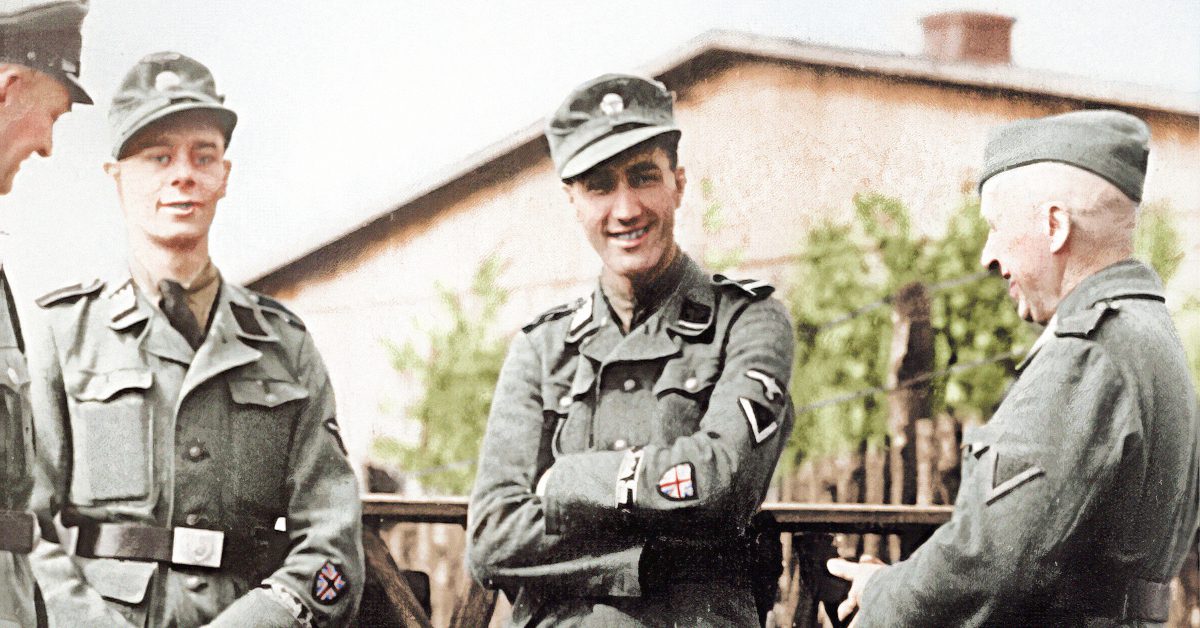
Traitors to King and Country: Inside the British Free Corps, Hitler’s British Legion
Reading time: 11 minutes
From the moment it took power, the Nazis ruled over a German state possessed of two armies. One was the inheritor of the imperial lineage of the First World War, and the second was the Waffen-SS, which grew from a tiny band of Hitler’s most hardened antisemites to a force of nearly a million men from over two dozen nations before its demise.

The Chipilly Six by Lucas Jordan – Capturing the Australian military spirit at its best
Jordan tells the story of ‘extraordinary men in extraordinary times’, a group of six Australian soldiers who operated well ahead of the Allied advance to clear critical high ground of German troops and machine guns, allowing the main advance to continue.
The text of this article was commissioned by History Guild as part of our work to improve historical literacy. If you would like to reproduce it please get in touch via this form.

